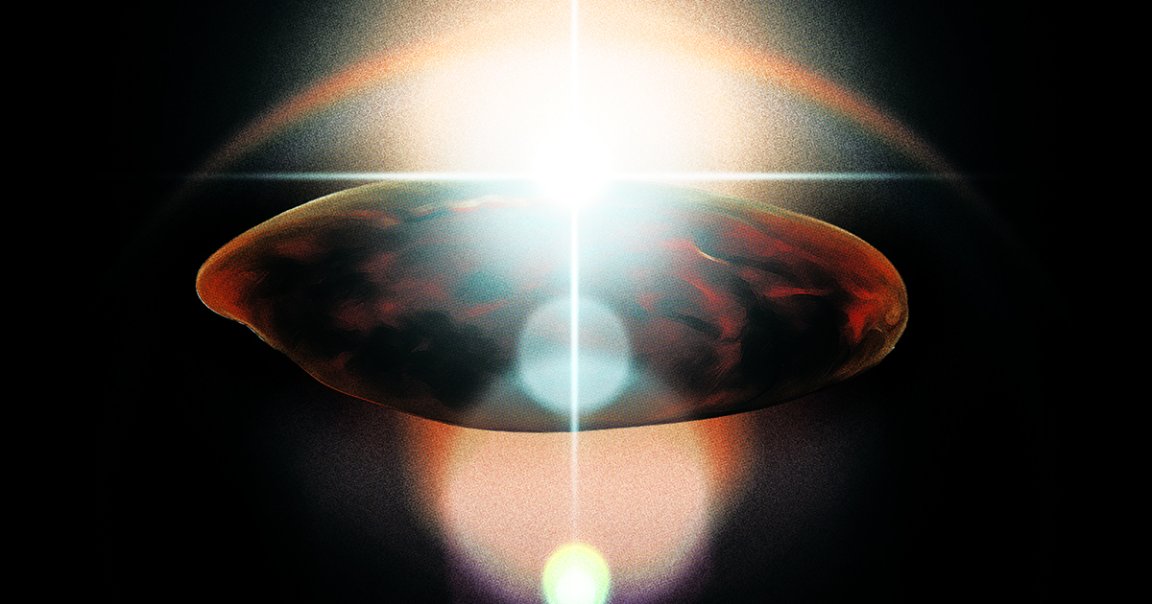
After taking another peek at the “city-killer” asteroid that once had a small but uncomfortable chance of smashing into our planet, astronomers have figured out what it actually looks like: a flat, spinning disk.
The preferred analogy has been to compare the shape to a hockey puck. To us, this sounds like a huge missed opportunity to say that the Earth was — however briefly — under threat by a literal flying saucer, just like in that one movie.
The findings come from a preprint study, accepted for publication in The Astrophysical Journal Letters. Using the Gemini South Observatory in Chile, the astronomers imaged the roughly 200-foot asteroid, 2024 YR4, in multiple wavelengths, revealing that it was rapidly rotating once every 20 minutes, in addition to its unusual UFO-like appearance.
“This find was rather unexpected since most asteroids are thought to be shaped like potatoes or toy tops rather than flat disks,” lead author Bryce Bolin from Eureka Scientific said in a statement about the work.
The chunky space rock was first spotted in late December of last year. Soon, early observations predicted that there was a small but disquieting chance of one percent that it could hit our planet. By February, the odds surpassed 3 percent, before the space rock was finally determined determined to be on a harmless trajectory.
At the time, from what scientists could tell from visible light observations, 2024 YR4 appeared to be around 300 feet long, a size large enough to wipe out a metropolis should it strike one. Recent research using the James Webb Space Telescope’s infrared capabilities, however, determined it was actually no more than 220 feet long, or about the size of a 10-story building, and as small as 174 feet. This latest study backs up that estimate, independently concluding that YR4 is between 98 to 213 feet in diameter.
Digging deeper, the astronomers studied the asteroid’s lightcurves, finding that 2024 YR4 is what’s known as an S-type asteroid rich in silicates. That’s not surprising, but its origins are: the asteroid appears to have been nudged our way by Jupiter out of the solar system’s main asteroid belt, a ring of rocky objects surrounding the Sun that stretches between the orbits of Mars and the gas giant — specifically, a region called the central main belt.
Previously, astronomers suspected 2024 YR4 came from the inner main belt, based on its composition — but its retrograde spin revealed in these latest observations indicate otherwise.
“We are a bit surprised about its origin in the central main asteroid belt, which is a location in the asteroid belt that we did not think many Earth-crossing asteroids could originate from,” Bolin said.
While it no longer poses a threat to Earth, there’s still a 3.8 percent chance YR4 could veer into the Moon, according to the latest Webb observations. If it does, the impact will leave a nasty scar — but shouldn’t alter the lunar world’s orbit.
More on space: Scientists Intrigued by Stars Singing Ancient Songs